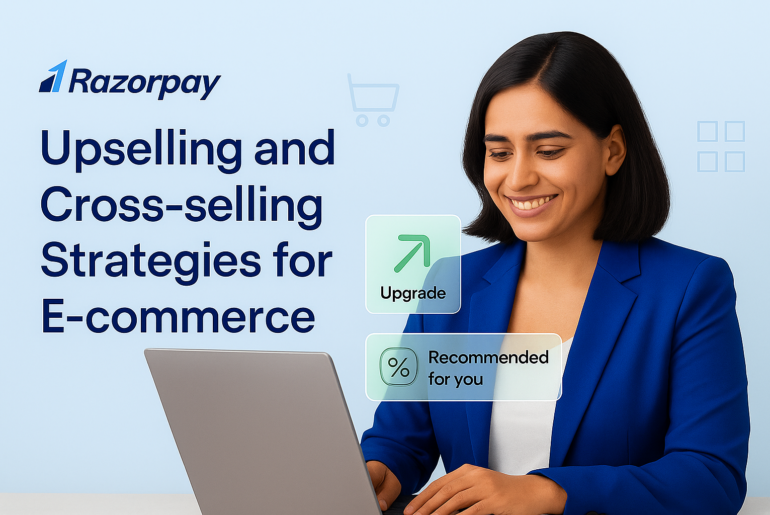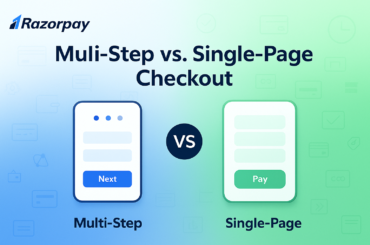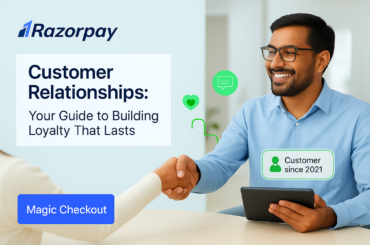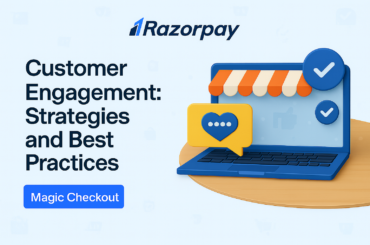We’ve previously discussed the potential of upselling and cross-selling within our guide on business growth tips and highlighted their importance in optimizing the checkout process. To further explore these strategies, this guide provides a comprehensive and actionable exploration of upselling and cross-selling. Upselling (encouraging customers to purchase a higher-priced or upgraded version) and cross-selling (recommending related or complementary products) are powerful techniques to increase revenue. This guide equips businesses to effectively implement these techniques and maximize their revenue potential.
Table of Contents
Defining Upselling and Cross-selling
To effectively leverage upselling and cross-selling, a clear understanding of each technique is essential. While both aim to increase revenue, they operate through distinct approaches:
Upselling
This involves persuading customers to purchase a more expensive, upgraded, or premium version of the item they’ve already chosen or are considering. The focus is on highlighting the added value or superior features of the higher-tier option within the same product category. In an e-commerce context, this could mean offering a customer viewing a digital camera an upgrade to a model with higher resolution or more advanced features. Similarly, when a customer adds a basic laptop to their cart, the site could upsell them to a version with more memory, a faster processor, or a larger screen. The core goal of upselling is to increase the value of the individual sale by convincing the customer that the upgrade is worth the additional investment.
Cross-selling
This focuses on recommending related or complementary products or services that enhance the customer’s initial purchase. The aim is to provide added value and meet more of the customer’s needs by suggesting items across product categories. For instance, an online retailer might cross-sell a phone case, screen protector, and wireless earbuds to a customer buying a new smartphone. Or, if a customer adds a dress to their cart, the site might cross-sell a matching belt, shoes, or jewelry. In this case, the goal is to increase the number of items a customer purchases during a single transaction.
Key Differences and Synergies
The primary difference lies in what is being offered. Upselling offers a better version of the same product, while cross-selling offers additional products. However, they are not mutually exclusive. An e-commerce business can effectively combine both strategies, offering an upgraded product and complementary items to maximize the overall transaction value and enhance the customer’s shopping experience.
Key Differences and Synergies
The primary difference lies in what is being offered. Upselling offers a better version of the same product, while cross-selling offers additional products. However, they are not mutually exclusive. A business can effectively combine both strategies, offering an upgraded product and complementary items to maximize the overall transaction value.
The Importance of Upselling and Cross-selling
 Upselling and cross-selling are not merely sales tactics; they are strategic imperatives for sustainable business growth. Their effective implementation yields several significant benefits:
Upselling and cross-selling are not merely sales tactics; they are strategic imperatives for sustainable business growth. Their effective implementation yields several significant benefits:
- Revenue Optimization: The most direct impact of upselling and cross-selling is on revenue. Both techniques aim to increase the amount a customer spends per transaction. Upselling encourages customers to spend more on a single item, while cross-selling increases the number of items purchased. This directly translates to a higher average order value (AOV), a key metric for e-commerce and other businesses. By strategically implementing these techniques, a business can significantly boost its overall sales revenue without necessarily increasing its customer acquisition costs.
- Increased Customer Lifetime Value (CLTV*): When executed effectively, upselling and cross-selling enhance the customer experience, leading to increased customer loyalty and retention. By providing customers with valuable upgrades or complementary products that meet their evolving needs, businesses foster a stronger relationship. Satisfied customers are more likely to make repeat purchases, increasing their CLTV and generating more revenue over the long term.
- Improved Profitability: Acquiring new customers is generally more expensive than selling to existing ones. Upselling and cross-selling allow businesses to maximize the value of their current customer base, reducing the reliance on costly acquisition strategies. By increasing AOV* and CLTV, these techniques contribute to improved profitability and a more efficient use of resources.
- Enhanced Customer Experience (when done right): While seemingly sales-oriented, upselling and cross-selling can significantly enhance the customer experience when approached with a customer-centric mindset. Providing relevant recommendations that genuinely address customer needs or solve their problems adds value to the purchase journey. Customers may discover products or services they were unaware of that ultimately improve their satisfaction with the original purchase. However, it’s crucial to avoid aggressive or irrelevant sales tactics, which can damage the customer relationship.
Upselling Strategies and Techniques
Upselling, when executed effectively, is a powerful way to increase revenue while simultaneously providing customers with enhanced value. To achieve this, it’s crucial to employ strategic techniques that focus on customer needs and present upgrades in a compelling manner.
Identifying Upselling Opportunities:
The first step is to pinpoint where and how upselling can be most effective within your sales process. This involves a careful analysis of your offerings and customer behavior:
- Analyze Customer Behavior and Purchase Patterns: Identify common purchase journeys and customer segments. Look for patterns in what customers buy and what they might need or want in addition. For example, if many customers purchase a basic product, what higher-tier versions do they often upgrade to?
- Segment Customers Based on Their Needs and Preferences: Different customer segments will have varying needs and price sensitivities. Tailor your upselling offers to specific groups. A customer who frequently buys high-end products might be more receptive to premium upgrades, while a budget-conscious customer might respond better to value-driven bundles.
- Identify Products or Services That Lend Themselves Well to Upselling: Some products and services are inherently better suited for upselling than others. Consider those where there are clear tiers, upgrades, or add-ons that significantly enhance the core offering. Examples include software with tiered features, electronics with upgraded specifications, or subscription services with premium benefits.
Effective Upselling Tactics:
Once you’ve identified the opportunities, employ these tactics to maximize your upselling success:
- Highlighting Value and Benefits: The most effective upselling focuses on what the customer gains from the upgrade. Clearly articulate the added value, superior features, or enhanced experience they will receive. Instead of simply stating the higher price, emphasize how the upgrade solves a problem, improves efficiency, or provides a better outcome.
- Creating Scarcity or Urgency: Limited-time offers, exclusive deals, or emphasizing limited availability can create a sense of urgency and incentivize customers to upgrade. However, use this tactic ethically and avoid misleading customers.
- Offering Comparisons: Present a clear comparison between the current selection and the upgraded option. Use a table or chart to highlight the key differences in features, specifications, or benefits. This helps customers visualize the value proposition and make an informed decision.
- Providing Social Proof: Customer testimonials, reviews, or ratings can build confidence in the upgrade. Showcase positive feedback from other customers who have benefited from the higher-tier option. This leverages the power of social influence to persuade potential upgraders.
- Bundling and Packaging: Offer a discounted price or special deal when customers upgrade to a higher-tier product or service. Packaging the upgrade with other relevant items can create a compelling offer that increases perceived value.
Also Read: Gamify Your Shopping Experience with Coupon Variety
Psychological Principles for Maximizing Upsells:
Understanding basic psychological principles can further enhance your upselling effectiveness:
- Anchoring: Presenting a higher-priced option first can make the subsequent, slightly lower-priced upgrade seem more appealing. The initial high price acts as an “anchor” that influences the customer’s perception of value.
- Loss Aversion: Emphasize what the customer will miss out on by not upgrading. People are generally more motivated to avoid losses than to gain equivalent benefits. Frame the upgrade as a way to avoid a negative outcome (e.g., missing out on a valuable feature).
Cross-selling Strategies and Techniques
Cross-selling, like upselling, can significantly boost revenue and customer satisfaction when implemented thoughtfully. The key is to offer relevant recommendations that enhance the customer’s purchase and provide added value.
Identifying Cross-selling Opportunities:
To effectively cross-sell, you need to understand the relationships between your products and anticipate customer needs:
- Analyzing Product Relationships and Purchase History: Identify which products are frequently bought together or complement each other. Look for patterns in customer behavior and past purchase data to uncover cross-selling opportunities. E-commerce platforms often provide data on “frequently bought together” or “customers who bought this also bought that.”
- Understanding Customer Needs and Purchase Intent: Consider the customer’s reason for buying a particular product. What other items might they need to fully utilize or enjoy their purchase? For example, someone buying a camera might also need a memory card, tripod, or camera bag.
- Identifying Complementary Products or Services: Think beyond obvious pairings. What products or services enhance the core product offering? This could include accessories, related items, or even services that improve the customer’s experience.
Effective Cross-selling Tactics:
Here are some proven tactics to implement cross-selling effectively:
- Product Recommendations: Display related products on product pages, cart pages, or during the checkout process. Use phrases like “You might also like,” “Customers who bought this also bought,” or “Complete your purchase with.” Ensure the recommendations are visually appealing and easy to find.
- Bundling and Packaging: Offer a discount or special deal when customers purchase a set of related items together. This incentivizes customers to buy more and increases the overall order value. Bundles can be pre-defined or dynamically generated based on the items in the customer’s cart.
- Personalized Recommendations: Leverage customer data to provide tailored product suggestions. Use browsing history, purchase history, and demographic information to show customers items they are more likely to be interested in. Personalized recommendations can significantly increase the relevance of your cross-selling efforts.
- “Frequently Bought Together” Displays: Showcasing what other customers have purchased alongside the current item can leverage social proof. Customers are often influenced by the purchasing behavior of others, making these displays effective.
- Post-Purchase Cross-selling: Don’t limit cross-selling to the immediate purchase process. Use email marketing to follow up with customers and offer relevant recommendations based on their past purchases. This can encourage repeat business and increase customer lifetime value.
Psychological Principles in Cross-selling:
Understanding customer psychology can further enhance your cross-selling effectiveness:
- Reciprocity: Offering a small gift, discount, or free shipping on the cross-sold item can trigger a sense of reciprocity, making customers more likely to make the purchase.
- Authority: Recommending products based on expert opinions, customer reviews, or “best-seller” status can add credibility and influence customer decisions.
Implementing Upselling and Cross-selling Effectively
 While the strategies and techniques outlined above provide a foundation, successful implementation of upselling and cross-selling requires careful planning and execution. Consider these key factors:
While the strategies and techniques outlined above provide a foundation, successful implementation of upselling and cross-selling requires careful planning and execution. Consider these key factors:
Timing and Placement
The timing and placement of your offers are crucial.
Before Purchase: Upselling can be effective on product pages, showcasing higher-tier alternatives. Cross-selling can also work well here, suggesting complementary items.
During Purchase: The cart or checkout page is a prime location for both upselling and cross-selling. Offer last-minute upgrades or relevant add-ons. Additionally, ensuring a seamless, frictionless checkout experience is vital. This is where tools like Magic Checkout can play a strategic role. A one-click checkout not only improves conversion rates but also ensures that added upsells and cross-sells are not lost due to cart abandonment caused by lengthy processes.
After Purchase: Post-purchase email marketing can be used for cross-selling, offering related products or services based on the customer’s purchase history.
The checkout stage plays a crucial role in effective upselling. See how to optimize it in our Ultimate Guide to Checkout.
Personalization and Relevance
Generic offers are less effective. Personalization is key to successful upselling and cross-selling.
Leverage Data: Use customer data (browsing history, purchase history, demographics) to tailor your recommendations.
Contextual Offers: Ensure offers are relevant to the customer’s current purchase. Irrelevant or intrusive offers can be annoying.
Avoiding Aggressiveness
There’s a fine line between helpful recommendations and pushy sales tactics.
Focus on Value: Always emphasize the value the customer will receive from the upgrade or add-on.
Offer Choices: Provide options but avoid overwhelming the customer with too many recommendations.
Maintain Transparency: Be clear about pricing and product information.
Testing and Optimization
Continuous testing and optimization are essential for maximizing results.
A/B Testing: Test different offers, placements, and messaging to see what performs best.
Analyze Data: Track key metrics (AOV, conversion rates) to measure the effectiveness of your upselling and cross-selling efforts.
Iterate and Refine: Adjust your strategies based on the data to improve results over time.
Measuring the Success of Upselling and Cross-selling
Implementing upselling and cross-selling is only half the equation. To truly optimize these strategies, you must track their performance and analyze the results. Here are the key elements to consider:
Key Metrics
Average Order Value (AOV): This is the most direct measure of upselling and cross-selling success. Track how AOV changes after implementing new strategies.
Conversion Rates: Monitor if upselling and cross-selling are positively or negatively impacting your overall conversion rates. Well-executed strategies should improve conversions.
Revenue per Customer: Analyze how upselling and cross-selling affect the long-term revenue generated by each customer.
Customer Lifetime Value (CLTV): Assess if these techniques contribute to increased customer loyalty and repeat purchases, thereby boosting CLTV.
Product Attach Rate (for cross-selling): Measure how often a specific cross-sold product is purchased along with the original item.
Tools and Analytics
Website Analytics Platforms: Tools like Google Analytics provide data on user behavior, purchase funnels, and conversion rates, allowing you to track the impact of upselling and cross-selling on these metrics.
E-commerce Platforms: Most e-commerce platforms have built-in reporting features that track sales, AOV, and other relevant data.
CRM (Customer Relationship Management) Systems: CRM systems can help you analyze customer purchase history and identify patterns in upselling and cross-selling success.
Analyzing Data and Making Adjustments
Identify Successful and Unsuccessful Strategies: Analyze the data to determine which upselling and cross-selling tactics are performing well and which are not.
Refine Your Approach Based on Data: Use the insights gained from data analysis to refine your strategies. Adjust your offers, placements, and timing to optimize results.
Upselling and Cross-selling: Wrapping Up Your Strategy
Upselling and cross-selling are indispensable strategies for e-commerce businesses seeking to maximize revenue and build stronger customer relationships. By understanding the nuances of each technique and implementing them strategically, businesses can significantly increase average order value, enhance customer lifetime value, and drive overall profitability. The key lies in prioritizing customer needs, offering relevant and valuable recommendations, and continuously optimizing your approach based on data. In the long run, a well-executed upselling and cross-selling strategy not only boosts sales but also fosters a more engaging and satisfying shopping experience, contributing to sustainable success.
*Please note that terms marked with an asterisk (*) are included in our glossary. Click on the highlighted term to view its definition and learn more about the concept.





